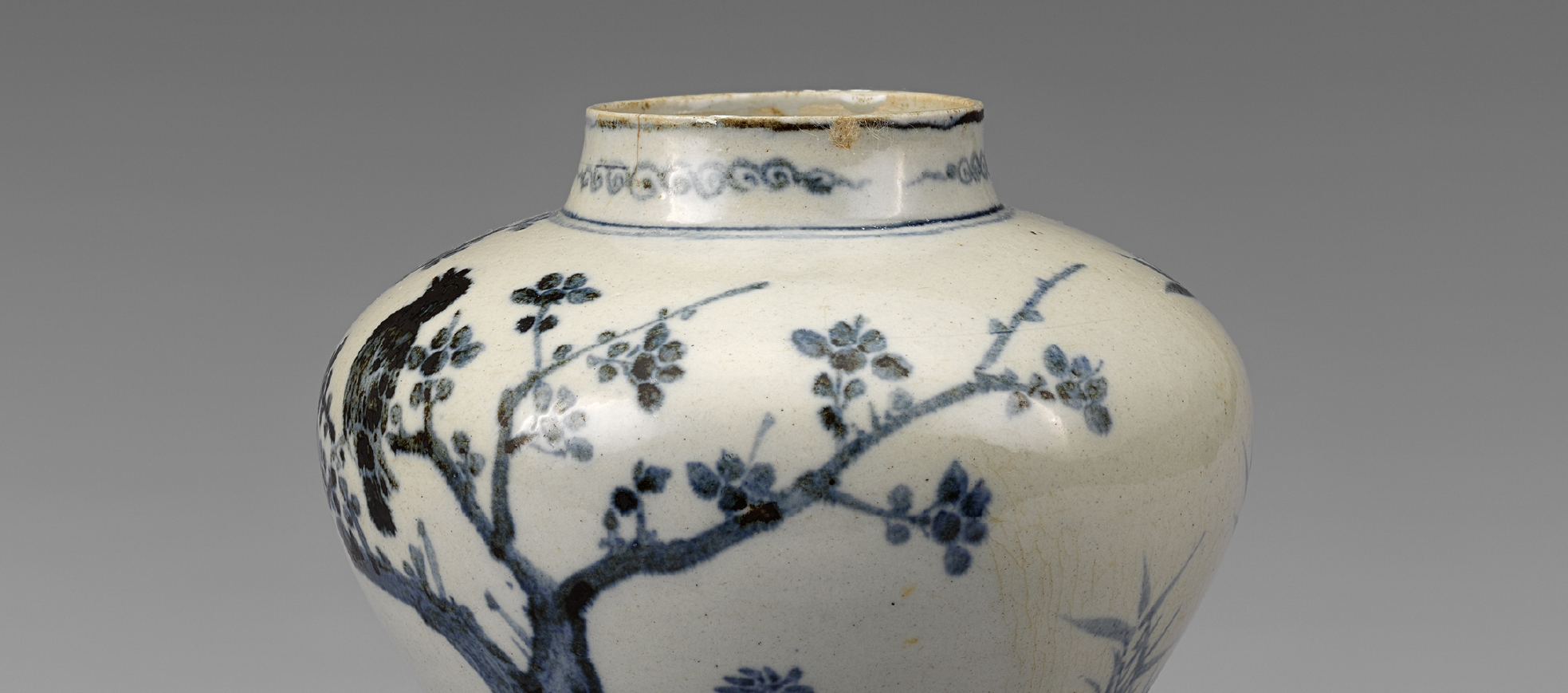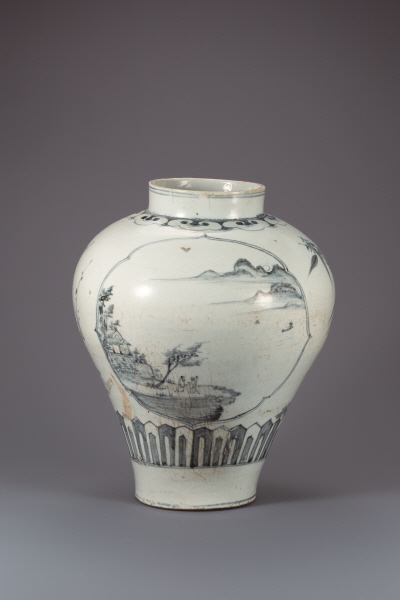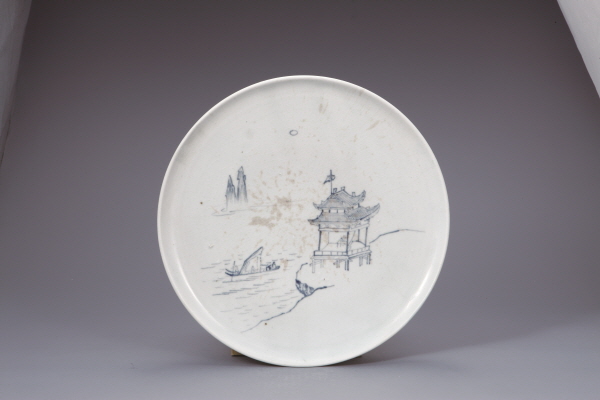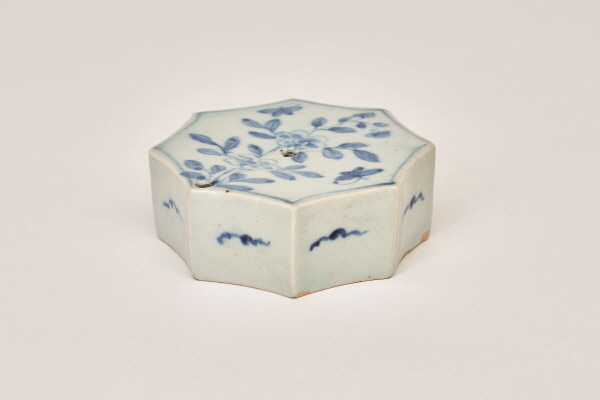
Feature
Cheonghwa Baekja of Joseon, Simplistic Beauty Expressed in Cobalt Blue
By Cho Hye-young (Loewe Craft Prize, The Korea Association of Art & Design)
Cheonghwa Baekja (cobalt blue underglaze white porcelain) is a type of white porcelain from Joseon. Patterns are painted with cobalt pigment on high-purity white porcelain, which is then embellished with a clear glaze before being fired. Cheonghwa Baekja has been undervalued and underappreciated as a cultural heritage due to the perception that it is a mere imitation of Chinese ceramics. However, when comparing the cobalt blue underglaze white porcelain vessels of Korea, China, and Japan, which all share the culture of Cheonghwa Baekja, they are distinctly different to the extent that they are easily distinguishable. The most noticeable feature of Korean Cheonghwa Baekja is the beauty of its white space. Unlike in China and Japan, the fact that there is white porcelain underneath does not detract from the artistry of the white porcelain itself while also harmoniously incorporating the unique beauty of Cheonghwa Baekja. Like Goryeo celadon, which is highly prized, Cheonghwa Baekja has developed into a unique beauty of our country, and it is worth examining its evolutionary process.
Cobalt can be found in various cultures across both the East and West, and its history is long-standing. The use of cobalt blue as a pigment dates back to the Bronze Age, and cobalt-tinted glass has also been discovered in ancient civilizations such as Egypt, Persia, and Pompeii. The name cobalt was given to the metal element in the 18th century by Swedish chemist Georg Brandt, who isolated cobalt from its ore, and it has been used ever since. This name originated from the 16th-century miners in Saxony, Germany, who called it cobalt after a mythical creature known to live in the mines, known as Kobold. This indicates that cobalt was actively utilized in the East and West around the same time.

Jar with Landscape Design, NATIONAL MUSEUM OF KOREA
The diversification of cobalt blue worldwide began in Kashan, Persia. From the 13th century and earlier, Persia produced pottery painted with blue cobalt pigment on white clay, sourcing the raw material from Kashan, a region rich in cobalt oxide. However, since they were unable to produce fine ceramics like those in East Asia, they developed tiles to cool down due to the sweltering heat. Since cobalt pigment was available in abundance in Kashan, unlike in East Asia, they mass-produced it and used it on a large scale, such as decorating the royal palaces of mosques. This would cross over to the Iberian Peninsula and become the Azulejo craft.
Furthermore, Persian cobalt blue was introduced into East Asian culture through the Ming Dynasty in China. This is inferred from the Chinese term for cobalt blue, huihui qing, where hui (回) refers to Islam in Chinese characters. The East Asian region, though not rich in cobalt pigment, had abundant kaolin and was already producing high-quality ceramics. Among these, the region of Jingdezhen in China was renowned for its high-quality kaolin from Gaoling Shan Mountain, making it a famous ceramic production area. The cobalt blue from Kashan, transported on camels to Jingdezhen, met with the high-quality porcelain made from kaolin, resulting in the creation of cobalt blue underglaze white porcelain vessels.
The kaolin from Jingdezhen is a soil evenly composed of quartz, clay, and feldspar. Quartz acts as the bone, clay as the flesh, and feldspar as the glue that binds them together, allowing for the production of high-quality porcelain. These cobalt blue underglaze white porcelain vessels began to be exported to the Middle East and then spread to the East and West through international exchanges. It became trendy in Europe, enabling China to amass a great deal of wealth.
Subsequently, in Europe, extensive efforts were made to create white porcelain, the basis for cobalt blue underglaze white porcelain vessels, even involving alchemists in the process. In the early 18th century, the Kingdom of Dresden-Saxony in Germany discovered kaolin, the secret ingredient of white porcelain. As a result, Meissen in Germany became the center of the world’s ceramic industry through its golden age in the 19th century and remains so to this day. Meissen’s success paved the way for the modern European porcelain industry and culture, influencing Delft in the Netherlands, Sevres in France, and Bone China in England.
Around the same time, the Chinese cobalt underglaze white porcelain was introduced to Joseon by importation from Ming. The product of diplomatic relations was initially enjoyed by scholars and the literati class. Gradually, Korea began producing its own Cheonghwa Baekja. It started by imitating the Chinese style but became more straightforward and concise over time.
Meanwhile, the culture of Cheonghwa Baekja was introduced to Japan by Korean potters who were taken there during the Imjin War. A notable example is Imari porcelain, which, by adding gold, displayed a different development from that of Joseon, becoming even more ornate.

Plate with Sosanggang River Design, NATIONAL MUSEUM OF KOREA

Pentagonal Water Dropper with Grass and Insect Design, Seoul Museum of Craft Art
However, in Joseon, cobalt pigment was an expensive import primarily consumed by the royal and scholar-official classes and was not exported overseas. Thus, Cheonghwa Baekja developed more intensively during this period. In terms of composition, Cheonghwa Baekja emphasized white space and tended to have lighter pattern lines than its Chinese counterparts. Following the philosophy of Neo-Confucianism, it favored simplicity and clarity over ornateness, with a general emphasis on a white color scheme. Like white porcelain, it embodies the spiritual values of the era, such as neatness and simplicity. Still, its beauty is further highlighted through restrained splendor, standing out amidst the relatively ornate cobalt blue culture of the East and West.
This uniqueness is also evident in the patterns and motifs carved into Cheonghwa Baekja. The culture of wayu (臥遊), which means to enjoy while lying down, is well represented in Cheonghwa Baekja, which refers to the culture of mountain water appreciation, in which Joseon’s scholar-officials brought natural scenery into their homes when practical constraints prevented them from going to nature. Typical activities included viewing landscape paintings, reading travelogues of mountain excursions, and enjoying mountain-shaped objects. While wayu was not unique to Joseon, as evidenced by the formal characteristics of Cheonghwa Baekja, it tended to be somewhat light-hearted and playful, differing from the Chinese culture of wayu, which aimed at cultivating the spirit and mind.
Jar with Plum, Bamboo, and Butterfly Design, The Trinity Gallery, Seoul_Yoo Eui-Jeong
White porcelain epitomizes simplicity, revealing its beauty through its form and subtle hues. However, Cheonghwa Baekja expresses this beauty more concretely and richly with the blue lines carved into its base.
At that time, Korean landscape paintings were primarily made into albums, folding screens, and scrolls. As the production and consumption of Cheonghwa Baekja became more accessible in late Joseon, they developed into landscape design. This became more popular because it could reflect various tastes, making it accessible to a wider range of people. In addition, because of its distorted nature, unlike the form of albums and folding screens, porcelain is not flat but curved and three-dimensional, and various shapes such as circles, ridges, and linear undulating shapes are compartmentalized on its surface to separate and represent space. This concept, known as neunghwachang (菱花窓), embodies the longing for nature in the shape of a window, enriching the cultural heritage of Cheonghwa Baekja.
The long history and tradition of Korean ceramics continue to inspire young artists today. We have a rich cultural heritage that continues to expand with new ideas, embracing the spiritual values and philosophies of our ancestors. Korea’s ability to create its own unique cultural heritage amidst the global expansion of cobalt blue is similar to cobalt’s magnetic properties as a metallic element. Cobalt is ferromagnetic, meaning it can magnetize itself without an external magnetic field.
In other words, it has the property of generating strong force on its own. Among all the cobalt blues in the world, Cheonghwa Baekja has drawn its unique line. Just as in the past, Korean cobalt blue will continue to evolve into forms that carry its own identity through those living in the new era.